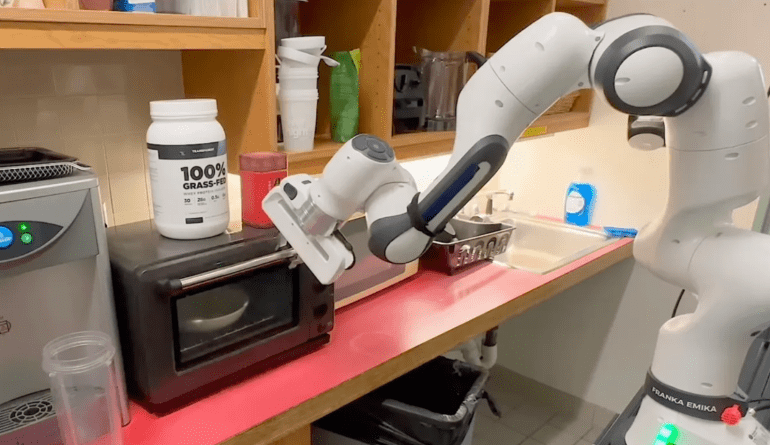- MIT CSAIL researchers have developed a new method for training home robots using iPhone scans.
- Users can scan parts of their home to create virtual models for robot training.
- Simulation allows robots to practice tasks millions of times without real-world consequences.
- This method helps robots adapt to dynamic home environments by enhancing simulation accuracy.
- The approach improves a robot’s ability to handle unexpected changes in the home.
Main AI News:
A major obstacle to the widespread adoption of home robots beyond vacuum cleaners is the challenge posed by the diverse and ever-changing nature of home environments. The complexity of homes—varying layouts, lighting conditions, surfaces, and the presence of humans and pets—makes it difficult for robots to operate effectively. Despite advancements in mapping technologies, the dynamic nature of homes presents a continual challenge.
Researchers at MIT’s Computer Science and Artificial Intelligence Laboratory (CSAIL) have introduced an innovative approach to address this issue. Their method leverages iPhone scans to create detailed simulations of home environments. By simply scanning a section of their home with an iPhone, users can generate a virtual model that is then used to train robots.
Simulation has long been a cornerstone of robot training, allowing machines to perform and perfect tasks in a virtual setting. This approach enables robots to practice and iterate on tasks millions of times within the time it would take to perform the task just once in reality. The risks associated with failure in a simulated environment are significantly lower compared to real-life scenarios. For instance, a robot can practice placing a mug in a dishwasher without the cost of breaking actual dishes.
“Training in the virtual world in simulation is very powerful, because the robot can practice millions and millions of times,” notes Pulkit Agrawal, a researcher at MIT CSAIL. “It might have broken a thousand dishes, but it doesn’t matter, because everything was in the virtual world.”
However, even the most advanced simulations have limitations, particularly in handling the unpredictable nature of home environments. By enabling users to scan their own homes, the new method offers a way to tailor simulations more closely to real-world conditions. This can significantly improve a robot’s ability to adapt to and handle unexpected changes, such as a piece of furniture being moved or a dish left on the counter. This approach not only enhances the robot’s functionality but also its flexibility in dynamic home settings.
Conclusion:
MIT CSAIL’s innovative approach to robot training using iPhone scans represents a significant advancement in making home robots more adaptable to diverse and dynamic environments. By integrating user-generated home scans into simulations, this method enhances robots’ ability to manage real-world variability and unexpected changes, which could lead to broader adoption and more sophisticated functionality of home robots. As home robotics continue to evolve, such advancements are crucial for overcoming the limitations of static simulations and achieving more practical and effective home automation solutions.

